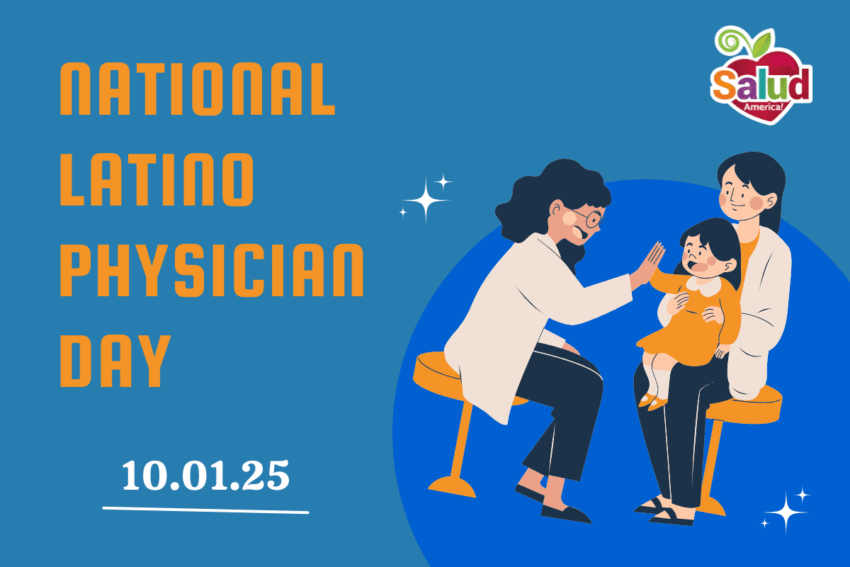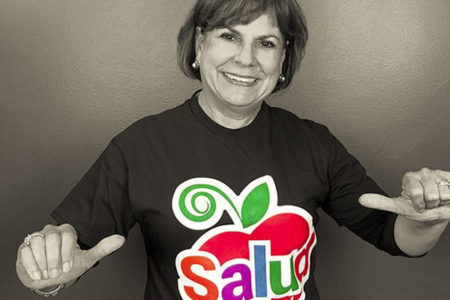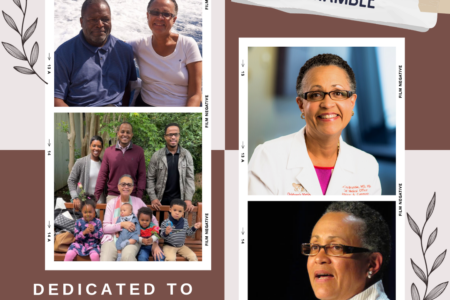
Share On Social!
Latinos continue to be a growing population in the US.
However, at 19.5% of the population, Latinos only comprise 6% of all physicians, according to the Association of American Medical Colleges (AAMC).
Fewer Latino physicians to meet the growing population can lead to worse health outcomes for Latinos, who rely on physicians that look and sound like them to build trusting patient-doctor relationships.
To shine a light on this issue, National Latino Physician Day occurs every Oct. 1 during Hispanic Heritage Month to honor Latino physicians and share the need for more.
Let’s go over how National Latino Physician Day came to be and why Latino physicians are integral for closing the gap on health differences for Latinos and all people.
How Did National Latino Physician Day Start?
National Latino Physician Day was established in 2022 by Drs. Michael Galvez and Cesar Padilla to draw attention to the Latino physician shortage.
“The mission of National Latino Physician Day to improve the quality of care for the United States Latino patient population by increasing the number of Latino physicians who provide … concordant care,” according to a National Latino Physician Day news release.
In 2023, National Latino Physician Day was introduced for recognition in the US Senate by Senator Alex Padilla and Senator John Cornyn and in the US Congress by Drs. Raul Ruiz and Yadira Caraveo.
“Having doctors who can communicate in their patients’ language and understand their patients’ [background and beliefs] leads to better health recommendations and outcomes,” Ruiz said in a news release.
Celebrate National Latino/a Physician Day on Oct. 1, 2025!
What Does National Latino Physician Day Aim to Spotlight?
National Latino Physician Day aims to “help create the narrative of the crisis regarding the lack of community and physician workforce” and it’s direct impact on coordinate care for Latinos and all people, according to a news release.
Research shows that having health providers who look and sound like you can improve patient health outcomes and improve trust and communication between physicians and those they serve.

“Having Latinos … in medicine is necessary for the Latino community and for the future of medicine in the United States,” according to the news release.
This is especially important today.
This year, National Latino Physician Day is highlighting major issues in the physician workforce.
Currently, there is a country-wide physician shortage ravaging hospitals and clinics.
With gaps in student loans, cuts to research funding, and eliminating programs that benefit low-income students, the Association of American Medical Colleges (AAMC) projects there could be a shortage of 86,000 physicians by 2036.
The country is also facing unprecedented cuts to Medicaid, which covers many overlooked populations, including many Latinos.
These cuts reduce the medical coverage of millions of Americans and impacts many hospitals that rely on Medicaid coverage to stay afloat.
Lastly, there has been an increased fear of seeking medical treatment and care amid questions about legal status .
“These combined crises threaten to further reduce access to [background-competent] and linguistically concordant care, making the mission of [National Latino Physician Day] more urgent than ever,” according to the news release.
Hurdles to Becoming a Latino Physician
The lack of Latino physicians stems from many issues, including the non-medical drivers of health, such as a lack of financial resources, access to healthy food and housing, and more.
One of the biggest challenges is the lack of opportunities for higher education, which is a requirement for physicians.
While Latino enrollment in 4-year institutions has risen significantly over the last two decades, Latinos are among the students with the greatest risk of withdrawing from post-secondary education programs, according to a recent survey by the Lumina-Gallup State of Higher Education.
Due to differences and background values, Latino students face high levels of stress.
This leads to a higher risk for mental health issues that may be left untreated because of the stigma surrounding mental health and could contribute to the higher drop-out rate.
For instance, 71% of Latinos didn’t enroll in degree programs because they needed to work to support their families, while 69% cited they couldn’t afford the cost of a four-year degree, according to a 2021 Pew Research Center survey.
In fact, college costs are one of the biggest hurdles to higher education for Latinos.
As of 2023, the average cost to attend an in-state public college was $10,662 a year, which works out to $42,488 for four years of classes, according to U.S. News & World Report.
That’s just for a bachelor’s degree. Fully realized physicians must undergo four years of undergraduate education followed by four years of medical school, complete several years of residency, and for specialty fields, a fellowship training program.
The average debt for a medical school student is over $200,000.
75% of Latino medical students have debt at a median amount of $200,000, compared to 71% of White students, according to Education Data Initiative.
Latinos are also more likely than other students to take on debt and have difficulties paying back loans, which can impact someone’s ability to buy a home, get a credit card, and more, according to the Pew Research Center.
In addition, Latinos are less likely to still be enrolled beyond the six-year mark on their way to completing a degree compared to their White peers.
Addressing Hurdles to Higher Education
To address these differences and make college and medical school more accessible to Latinos and all people, we must create new pathways to higher education.
Those pathways begin at public education where education inequities begin the moment someone enters kindergarten.
One of the best ways to do this is to increase teachers of all backgrounds at both the K-12 and college level.
Educators who represent the student body can better understand the student’s background and tailor their teachings to the needs of the student.
All public schools around the country are not created the same.
Some schools, especially in impoverished and rural areas, may have less funding and therefore be equipped with fewer resources, such as technology, supplies, and programs that help students prepare for the future.
To address these inconsistencies, The Brookings Institution suggests offering summer school and afterschool programs to help close learning gaps.
At the high school level, school districts should invest in technology programs, such as computer science, and integrating them into regular coursework, to prepare Latino and all students for in-demand jobs in the STEM field.
What’s more, creating partnerships between high schools and Hispanic-serving institutions (HSIs) can also open doors for students to enter higher education.
Currently there are more than 500 HSIs across the country that educate more than 4.7 million students, according to a White House news release.
However, it isn’t enough for them to exist, the Department of Education must also invest in the growth and resources that these institutions can provide.
Which brings us back to National Latino Physician Day.
By The Numbers
44
million
immigrants live in the United States



